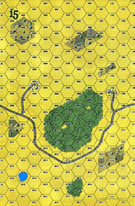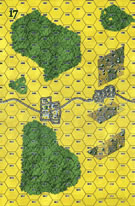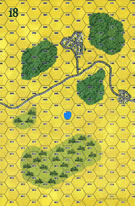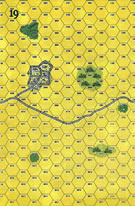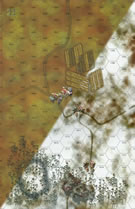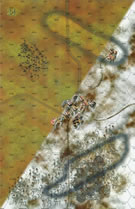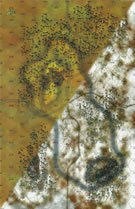|
Here Come the Yankees Red & White #6 |
||
|---|---|---|
| (Defender) Soviet Union | vs | United States (Attacker) |
| Formations Involved | ||
|---|---|---|
| Soviet Union |  |
210th Rifle Regiment |
| Soviet Union |  |
275th Guards Rifle Regiment |
| United States |  |
22nd Infantry Regiment |

| Total | |
|---|---|
| Side 1 | 0 |
| Draw | 0 |
| Side 2 | 0 |
| Overall Rating, 0 votes |
|---|
|
0
|
| Scenario Rank: of |
| Parent Game | Red & White |
|---|---|
| Historicity | Alt-History |
| Date | 1951-10-29 |
| Start Time | 07:00 |
| Turn Count | 32 |
| Visibility | Day |
| Counters | 255 |
| Net Morale | 0 |
| Net Initiative | 1 |
| Maps | 8: 15, 17, 18, 19, 22, 23, 24, 25 |
| Layout Dimensions | 112 x 86 cm 44 x 34 in |
| Play Bounty | 310 |
| AAR Bounty | 227 |
| Total Plays | 0 |
| Total AARs | 0 |
| Battle Types |
|---|
| Inflict Enemy Casualties |
| Meeting Engagement |
| Rural Assault |
| Urban Assault |
| Conditions |
|---|
| Off-board Artillery |
| Randomly-drawn Aircraft |
| Smoke |
| Terrain Mods |
| Scenario Requirements & Playability | |
|---|---|
| Cassino '44 | Counters |
| Elsenborn Ridge | Maps + Counters |
| Hammer & Sickle | Counters |
| Red & White | Base Game |
| Patton's Nightmare | Counters |
| Road to Berlin | Maps + Counters |
| Introduction |
|---|
|
With the help of the 82nd Airborne and significant air and naval assistance, Polish forces held onto the ports of Gdansk and Gdynia. However, while the Soviet 16th Königsberg Red Banner Rifle Corps maintained pressure from the east, the 36th Nemanskiy Red Banner Rifle Corps under General Vitikov pushed around the southern flank and threatened to envelop the defenders. Meanwhile, a delayed Soviet assault crossed the Oder River on the Polish-German border in the west, capturing the bay and surrounding peninsula, and threatening Szczecin from the north. The timely arrival of the rest of General Bart's U.S. 1st Expeditionary Army at the ports of Ustka and Darlowo allowed the forces to flow almost directly into battle against the implacable Soviets. Lt. General Vivo immediately engaged his 1st Expeditionary Corps, which included the 1st Ranger Battalion, 3rd Armored Division, and 4th Infantry Division. Lt. General Allen Dickerson's 2nd Expeditionary Corps comprised of the 3rd Ranger Battalion, 2nd Armored Division, and 32nd Infantry Division would follow shortly. |
| Conclusion |
|---|
|
This meeting engagement favors the Americans who are fresh and well supplied. However, the Soviets can win if they use their time to dig in and employ their hard-hitting units well. |
| Additional Notes |
|---|
|
G2 note: Books says 30th Guards Mechanized Division. In 1965 the division was redesignated the 18th Guards Motor Rifle Division. In the 1990's the division contained the 210th Motor Rifle Regiment. |
| AFV Rules Pertaining to this Scenario's Order of Battle |
|---|
|
| 3 Errata Items | |
|---|---|

|
The reduced direct fire value in Kursk: Burning Tigers is 4-4. (plloyd1010
on 2015 Jul 31)
|

|
Kommissars never get morale or combat modifiers. Ignore misprints. (Shad
on 2010 Dec 15)
|

|
All Guards T-34/85 tanks should have AT fire values of 7-7. (Shad
on 2010 Dec 15)
|

 ICRW005
ICRW005 



